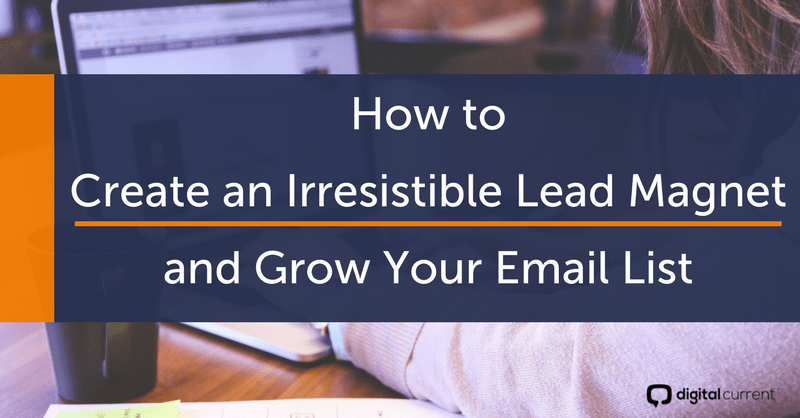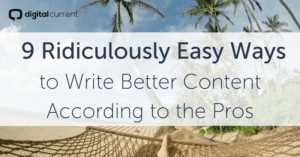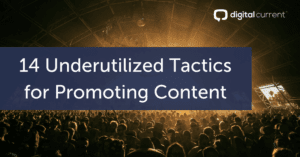Customers rarely convert immediately, often taking their time to decide. Use our enticing lead magnet ideas to get their email & guide them along the customer journey.
In a perfect world, customers would see a product, fall in love with it, and immediately make the decision to buy.
In reality, this rarely happens. Most people go through a long decision-making process — also known as the customer journey — before taking that final step. But the good news? You can nurture those prospects online, earning the opportunity to convince them to opt in, download, and ultimately buy.
So how do you do this? And where do you first make contact? That’s where your lead magnet comes in. Also known as a content upgrade, bonus, or blog extra, this specific type of content will act as lure, attracting your perfect audience.
Let’s break down the why, how, what, who, and where of creating your irresistible lead magnet.
Why Do You Need a Lead Magnet?
As Pat Flynn from Smart Passive Income says: “A content upgrade is simply bonus content that people can get access to in exchange for their email address. Unlike traditional ‘site-wide’ lead magnets, however, content upgrades are unique to the specific content that people are already reading or listening to on your site.”
And therein lies the beauty of a lead magnet. With more than 96 percent of the people landing on your website not ready to buy, a lead magnet gives them reason to opt in and learn more. Rather than losing those just browsing, researching, or checking out what you have to offer, you capture their attention.
Now consider the fact that 81 percent of sales happen after seven or more interactions with your brand, and a lead magnet which nurtures that relationship just makes sense. In place of a hard sales pitch, you offer something of value that then let’s you build a relationship.
You’re not forcing the visitor to buy, nor are you implying that they’ll have to do it sometime in the future. Instead, you gain access to their contact details, something you can use to guide them through the three phases of the buyer’s journey. This earns you the opportunity to turn that first glance into a sale and potential client for life.
But why not simply ask your reader to subscribe to your email list? Because most won’t do it. Email is very personal, and the majority of your website and blog visitors will only exchange their email for something of perceived value.
That’s where your lead magnet comes in to save the day.
Step 1: Add Lead Magnets to Your Marketing Funnel
A lead magnet is the foundation of your marketing funnel. As you consider the three phases of the buyer’s journey, a lead magnet sits right up top in the Awareness phase. It’s the one thing that can turn new site visitors into leads and potential sales. It’s the key to building a relationship with your audience that nurtures them into potential customers.
However, you’ll never be able to achieve that unless you create the perfect lead magnet: one that is simply irresistible to your ideal customer. Because your goal should never be to get as many leads into the funnel, but instead to get the right kind of leads.
There are several variations of a lead magnet that you can add into the top end of your funnel. Take Marketing Insider Group as an example. Their offer is simple: sign up for their email list and they’ll give you an e-book, “10 Content Marketing ROI Formulas and Calculations.”
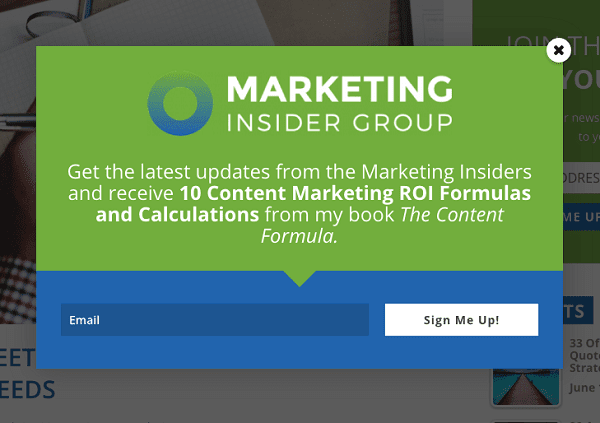
The MemberShip Guys go straight for the value-add. They offer blog readers a guide to “Creating, Launching, and Growing Your MemberShip Site.” Pretty straightforward, right? Anyone looking to build a membership site would find this relevant, intriguing, and the exact solution to their current problem.
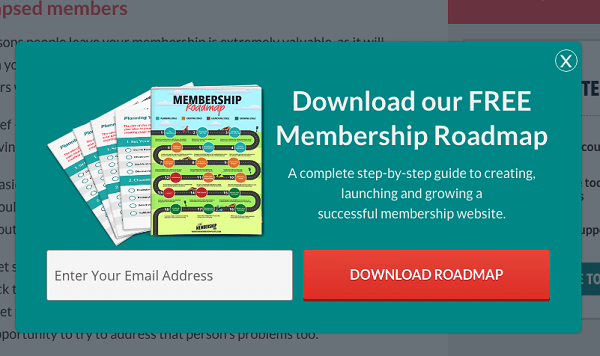
Your goal is to turn your audience’s struggle into an evergreen lead magnet that never gets old, and continues to bring in leads for years to come.
Step 2: Design High-Converting Landing Pages
Even the best lead magnet in the world is worthless if you don’t haven’t created a specific landing page for it.
A landing page, or lead page as it’s sometimes called, acts as a bridge between your customer and the lead magnet, a kind of entryway to that content. It’s the place where your visitors submit their contact details and gain immediate access.
However, if that entryway isn’t convincing or appealing, the probability is high that you’re losing valuable leads. So how do you design a high-converting landing page?
Unfortunately, there’s no universal formula that works for every single web page, audience, or niche. But, after 10 years of testing, creating, and experimenting with what works (and what doesn’t), I have found elements that work every single time.
An Attention-Grabbing Headline
The headline is your first and best chance to catch a user’s attention. If you want to keep them interested, use a headline that speaks to their pain and actual intent.
In it, you want to answer the who (whose problem are you solving), the what (what am I going to get), the how (how am I going to get it), and the where (where is this going to help me improve within my business).
Digital Marketer does an excellent job answering every question with this Landing Page. That means any objection has been met without the audience even realizing it. Smart marketing, don’t you think?
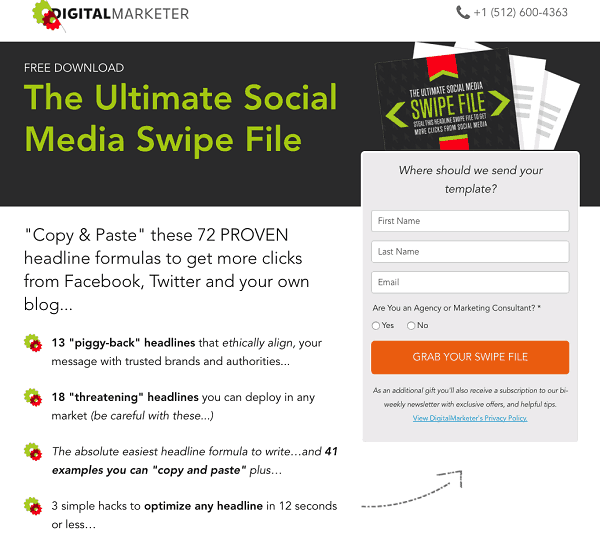
A Persuasive Subheadline
Use the subheadline an extension of your headline. This offers additional details while compelling your visitor to take a deeper look… and stick around for a little longer.
A Clear Description
This is your chance to give the visitors all critical details about the lead magnet and convince them to opt in. Here you want to be straightforward, providing the exact content your audience will find if they take the offer.
It’s also a great time to speak the language of your audience, not hyped-up marketing speak like “act now,” “one time only,” “buy, buy, buy.” You catch my drift.
Relevant Images and Videos
A picture is worth a thousand words, leverage that immense power to attract the user’s attention and tell your story. Make sure the image or video is high quality and relevant to your offer.
A Strong Call-to-Action
After the user has read all the information, they need to know what their next step is. So, use your call-to-action to tell them exactly what to do.
Trustworthy Testimonials
Use testimonials, guarantee seals, and press mentions to help build trust and authority around your offer. But only do this if they’re real, verifiable, and establish credibility and authority on your behalf.
In this example from Strategic Profits, the name, title, and company are all included. These are important details, especially when your landing page includes a high-ticket product.
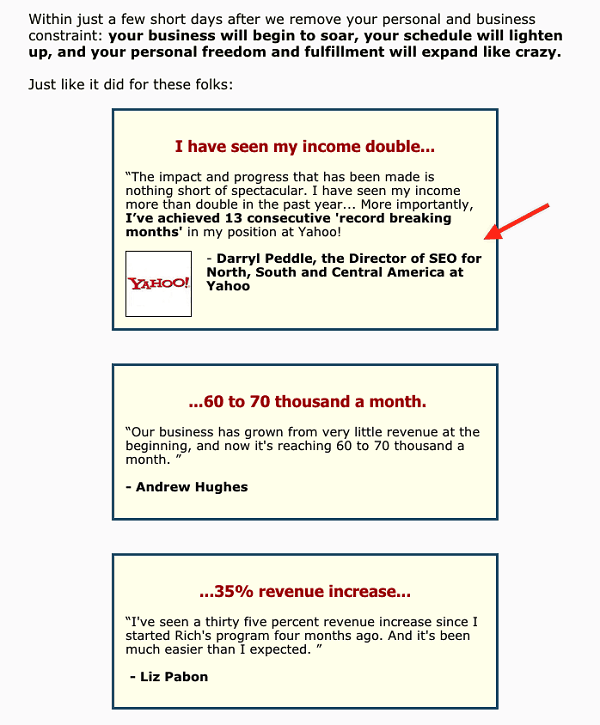
A Singular Focus
Believe it or not, 48 percent of landing pages contain multiple offers and links. Not hard to imagine why that page isn’t converting.
Remember, a confused mind won’t buy, nor will they stick around for any length of time. Sadly, what they will do is move on to the competition where clarity reigns supreme. To avoid this problem, maintain a singular focus in your content and the links you add to it.
Correct Placement
Placement is everything. Certainly, you’ve heard the phrase, “above the fold.” But what you may wonder is if there’s any validity to it. While it is a best practice to keep your most important content up top, it doesn’t work in all situations.
As Joanna Wiebe of Copy Hackers explains:
“Don’t cram everything above the fold. Countless tests and scroll / click-tracking studies have shown that visitors are willing to scroll… as long as they know there’s something to scroll down for. (So, don’t create a false-bottom.) Don’t prevent people from exploring your content by making assumptions about their use behaviors.”
Step 3: Ideas to Create Your Irresistible Offer
There’s no ideal lead magnet format that’s perfect for every niche and audience. Some visitors prefer webinars, videos, or infographics.
The best place to start is researching and testing which content types are most in-demand with your specific audience. Here are a few to consider:
Webinar
According to LeadPages, 9 out of the 12 highest-converting templates are webinar registration pages. That’s not surprising, if you consider the amount of value that many webinars bring.
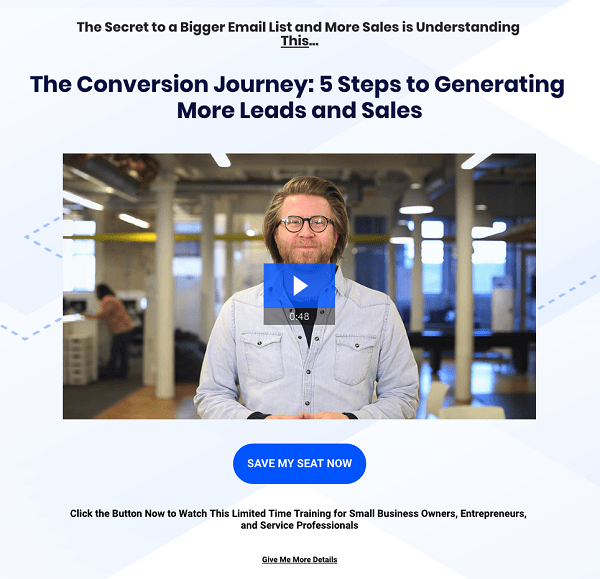
Webinars are one of the best ways to build your email list and sell to it at the same time, both in B2B and B2C marketing — but only if you do it correctly. An effective webinar should be packed with value for the guest, including free downloads.
For example, if you run a webinar on how to market your business on social media, you might also give away a downloadable PDF mentioning all the best tools and apps to use.
Don’t forget to also include a clear and concise CTA to guide your guests to the next step.
E-books
If you want to build credibility and trust, while at the same time growing your email list, create an e-book. Make sure it’s packed with information relevant to your industry and your audience’s needs and interests. Share your knowledge and position yourself as a credible source.
E-books are most effective in B2C marketing, but can be used in any type of industry. They can offer both, general industry information.
Just take a look at Jeff Bullas’ lead magnet e-book. It promises to share 101 tips and tactics to grow your web traffic. If that’s not enough to tempt you to opt in, the claim that these tactics have helped Jeff attract over 5 million visitors will probably help you decide.

Workbooks
If you create an e-book, I suggest you also create a workbook to follow it. The two complement each other and help guide the user through the customer journey.
While an e-book gives the user valuable information and turns a visitor into a lead, a workbook helps them take the necessary action and ultimately become a customer.
So, for example, if you created an e-book on how to find your target audience, you might want to create the workbook with all questions that will help you define your perfect customer.
Infographic
Infographics are hot. They’re Liked and shared on social media three times more than other any other type of content.
So, share them on social AND tap into that power for lead generation. Create an infographic that users will be willing do anything to get, including giving away their contact details.
Make it informative, filled with clear and concise data (no long blocks of text!) and visually appealing. If you can’t afford a designer — no problem. Just use a tool like Canva to create a professional-looking infographic.
Case Studies
Case studies are a practical and data-driven way to show how your company solves problems.
Talk about a problem your company faced and how you solved it (in detail). Don’t forget to discuss who you solved it for and what the end result was. For example, if you’ve been sharing a lot of content on Facebook and getting massive engagement but no conversions, you might do a case study where you explain how you found the root of the problem and solved it.
This is an excellent way to build credibility in B2B or B2C marketing, especially for service-oriented businesses.
Video Series
If an image is worth a thousand words, imagine how much a video is worth. Now consider a video series — it’s a real treasure trove of value for the user and the perfect lead magnet. No wonder 87 percent of online marketers use video content.
So, create a video series focusing on one of the issues your target audience is dealing with. Give practical insight and tips in each of your videos to keep the user’s attention. The more time they spend with you, the more likely they’ll be to invest in your product or service.
Sue B. Zimmerman is a great example of how you can leverage a video series. She focuses on building better business habits in three days — something all entrepreneurs can benefit from.
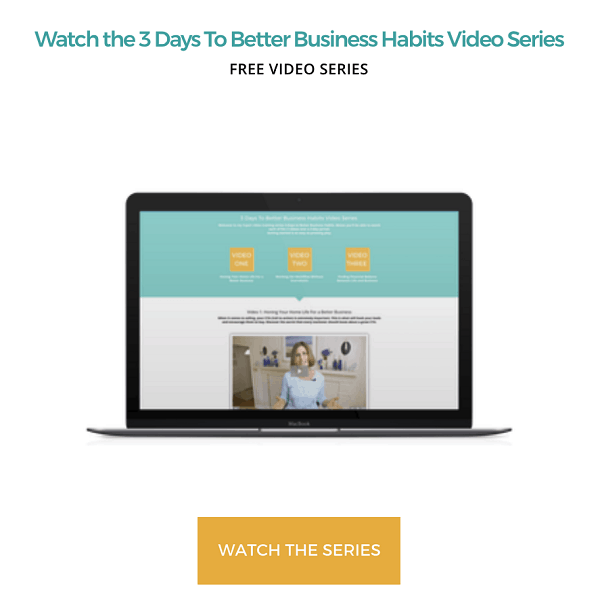
Reports
Reports are a great way to help a reader solve their problem and possibly even offer your product or service as a solution.
For example, a landscape designer might create a report on how to choose the right landscape designer for your land and specific needs. This kind of report could be a huge help to someone who’s trying to find the perfect landscape designer for then. Not to mention that it will position you as a potential choice.
Checklist
Users love checklists — they’re clear, concise, and help them take action and feel productive about it. Create a checklist that helps your audience overcome a challenge or solve their unique issue.
You can use any variety of the ideas below:
- Checklist of steps to follow
- Checklist of materials the user will need
- Checklist of ideas
- Checklist of must-have tools and apps
The great thing about checklists is that you don’t have to build it from scratch. In fact, many blog posts have the potential to become a great checklist, once they’re cut down and reformatted.
All you have to do is take a blog post, turn it into a downloadable checklist, and use it to generate leads. For example, one of my most successful lead magnets is a daily social media checklist. It drives hundreds of new leads into my funnel every week.
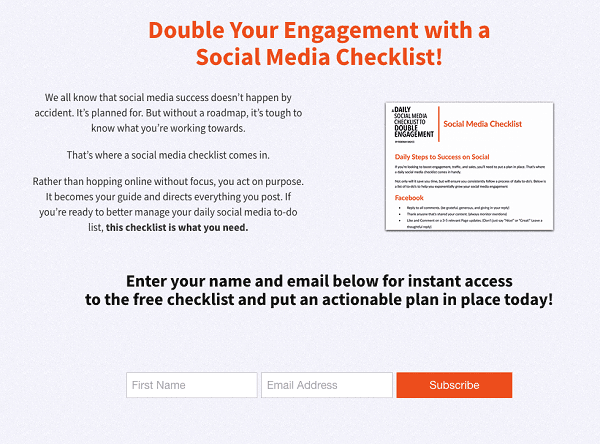
White Papers
If your focus is on B2B marketing, give white papers a try. These are the perfect way to help users understand a specific issue and make the right decision.
Start out with an overview and then move on to the challenge. Explain how your product or service solves that challenge or problem.
End with a clear conclusion and CTA that urges the user to take the next step.
Blog Post to PDF
This is one of the easiest content upgrades to create. Why? Because you’ve already created it! All you have to do is take an old blog post and turn it into a downloadable PDF.
I suggest you choose a high-trafficked blog post that you could expand upon. Let’s say you wrote an article a year ago that’s still relevant today, take that post and extend it by 1,000 words. Add in timely examples, links to additional resources, case studies, and more. Voila, new lead magnet!
Final Thoughts
There are many types of lead magnets, each one effective in its own way. It’s your job to find one that best fits your niche, brings value to your site visitors, and gets them one step closer to investing in your product or service.
Over to you… what one lead magnet idea will you definitely try? Share with me on Twitter!
